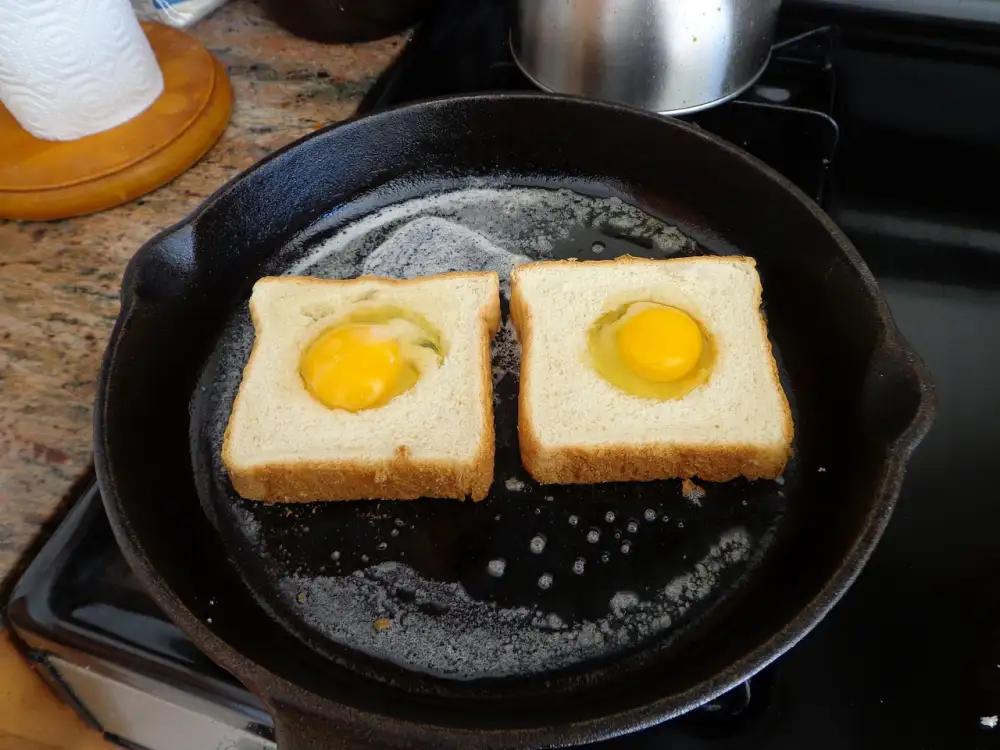Master the Art of Cleaning Your Cast Iron Skillet: A Step-by-Step Guide for a Spotless Home

- Gather the necessary supplies for cleaning
- Preparing the cast iron skillet for cleaning
- Cleaning the cast iron skillet with hot water and a brush
- Removing stubborn residue with salt and oil
- Drying and seasoning the cast iron skillet
- Storing the cast iron skillet properly
- Tips for maintaining a clean cast iron skillet
Cleaning a cast iron skillet may seem like a daunting task, but with the right techniques and supplies, it can be a breeze. A well-maintained cast iron skillet not only enhances the flavor of your dishes but also ensures its longevity. In this ultimate guide, we will walk you through the step-by-step process of cleaning your cast iron skillet at home. So, say goodbye to stubborn food residue and hello to a revitalized and restored cooking companion!
Gather the necessary supplies for cleaning
To effectively clean your cast iron skillet, it is important to gather the necessary supplies beforehand. Here's what you'll need:
1. Hot water: This will be the primary cleaning agent for your skillet.
2. Soft-bristle brush or sponge: Choose a brush or sponge specifically designed for cast iron to avoid scratching the surface.
3. Salt: Coarse salt works best for removing stubborn residue and food particles.
4. Oil: A high smoke point oil like vegetable oil or flaxseed oil is ideal for seasoning and maintaining the skillet's non-stick surface.
By having these supplies ready, you'll be well-prepared to tackle any cleaning task and keep your cast iron skillet in top-notch condition.
Preparing the cast iron skillet for cleaning
Before you begin cleaning your cast iron skillet, it's important to prepare it properly. Start by removing any excess food or debris from the surface using a spatula or scraper. Be gentle to avoid scratching the skillet. Next, rinse the skillet with warm water to remove any remaining residue. Avoid using soap at this stage as it can strip away the skillet's seasoning. Finally, dry the skillet thoroughly with a clean towel to prevent rusting. With these simple steps, your cast iron skillet will be ready for a thorough cleaning.
Cleaning the cast iron skillet with hot water and a brush
Cleaning the cast iron skillet with hot water and a brush is an essential step in maintaining its cleanliness. After each use, allow the skillet to cool slightly before cleaning. Then, rinse it under hot water to remove any food particles or residue. Using a stiff-bristled brush, gently scrub the surface of the skillet to loosen any stuck-on debris. Be sure to pay attention to the corners and edges where food can easily get trapped. Avoid using soap as it can strip away the seasoning of the skillet. Once you have thoroughly cleaned the skillet, rinse it again under hot water to remove any remaining debris.
Removing stubborn residue with salt and oil
To remove stubborn residue from your cast iron skillet, you can use a combination of salt and oil. Sprinkle a generous amount of coarse salt onto the surface of the skillet. Then, using a paper towel or a clean cloth, rub the salt into the residue, applying gentle pressure. The salt acts as an abrasive to help loosen the stuck-on food particles.
Next, pour a small amount of oil onto the skillet. You can use any type of cooking oil, such as vegetable or canola oil. Using a clean cloth or paper towel, rub the oil into the surface of the skillet, focusing on areas with stubborn residue. The oil helps to further break down and lift off any remaining food particles.
Continue rubbing the salt and oil mixture onto the skillet until all residue is removed. If necessary, you can add more salt and oil as needed. Once all residue has been loosened and lifted off, rinse the skillet with hot water to wash away any remaining salt and oil.
Remember to avoid using soap when cleaning your cast iron skillet as it can strip away its seasoning. Instead, rely on this simple yet effective method using salt and oil to keep your skillet spotless and ready for your next delicious meal!
Drying and seasoning the cast iron skillet
After cleaning your cast iron skillet, it's important to dry it thoroughly to prevent rust. Start by using a clean towel or paper towels to remove any excess moisture. Then, place the skillet on a stovetop burner set to low heat for a few minutes to evaporate any remaining water.
Once the skillet is completely dry, it's time to season it. Seasoning helps create a non-stick surface and enhances the flavor of your food. To season your cast iron skillet, apply a thin layer of oil all over the surface, including the handle. Use a cloth or paper towel to spread the oil evenly.
Next, preheat your oven to 350°F (175°C). Place the oiled skillet upside down on the middle rack of the oven with a baking sheet or aluminum foil on the bottom rack to catch any drips. Bake for about one hour.
After an hour, turn off the oven and let the skillet cool inside before removing it. The heat from the oven helps bond the oil to the skillet, creating that coveted seasoned layer.
Remember that seasoning is an ongoing process. The more you use and maintain your cast iron skillet, the better seasoned it will become. Each time you cook with it, you'll be adding another layer of seasoning.
By properly drying and seasoning your cast iron skillet, you'll ensure its longevity and optimal performance in your kitchen. So take care of this versatile cooking tool and enjoy delicious meals for years to come!
Storing the cast iron skillet properly
Storing the cast iron skillet properly is essential to maintain its quality and prevent rusting. After cleaning and drying the skillet thoroughly, it's important to store it in a dry place. Avoid stacking other cookware on top of it as this can cause scratches. To prevent moisture from building up, place a paper towel or cloth inside the skillet before storing. If you have limited space, consider hanging the skillet or using a specially designed rack. By storing your cast iron skillet properly, you'll ensure its longevity and be ready to whip up delicious meals whenever you desire.
Tips for maintaining a clean cast iron skillet
1. Avoid using soap: Soap can strip away the seasoning on your skillet. Instead, use hot water and a stiff brush to remove any food particles.
2. Dry thoroughly: After washing, make sure to dry your skillet completely to prevent rusting. Place it on low heat for a few minutes or use a paper towel to absorb any remaining moisture.
3. Season regularly: To maintain the non-stick surface of your cast iron skillet, season it regularly with oil. Apply a thin layer of oil and bake it in the oven at 350°F (175°C) for an hour.
4. Avoid acidic foods: Acidic foods like tomatoes or citrus can damage the seasoning on your skillet. If you need to cook these foods, consider using a different type of cookware.
5. Store properly: Store your cast iron skillet in a cool, dry place with enough ventilation to prevent moisture buildup. You can also place a paper towel inside to absorb any excess moisture.
By following these tips, you can ensure that your cast iron skillet remains clean and well-maintained, ready to deliver delicious meals every time you use it.
By mastering the art of cleaning your cast iron skillet, you can ensure that it remains in top-notch condition for years to come. Not only will a clean skillet enhance the flavor of your dishes, but it will also prevent any unwanted flavors from transferring to your food. Additionally, a well-maintained skillet is less likely to rust or develop sticky residue, making it easier to cook with and clean in the future.
So take the time to gather the necessary supplies, prepare your skillet properly, and follow our step-by-step guide for cleaning. Remember to dry and season your skillet after each use, and store it in a cool, dry place. By maintaining a clean cast iron skillet, you'll be able to enjoy cooking delicious meals that are full of flavor and free from any unwanted remnants from previous dishes. Happy cooking!
Published: 12. 01. 2024
Category: Home



